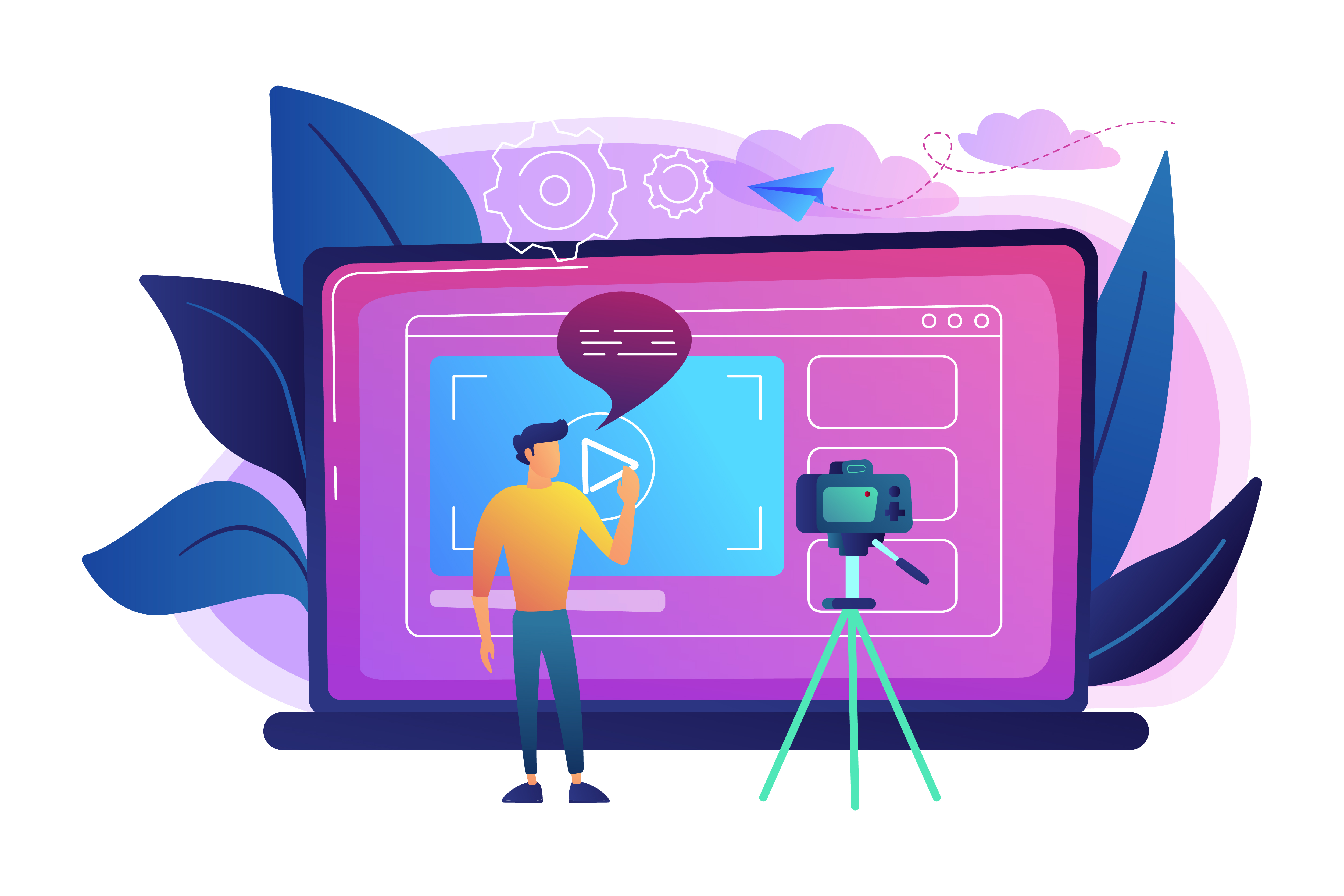Big changes have happened to the event planning community in a world shaped by COVID. Event planners have worked hard to transition the attendees of their on-premises events into the virtual space. Even with COVID hopefully winding toward an end, more organizations than ever before have moved to virtual event planning for their conferences, meetings, and sales events.
Meeting planners have adjusted to this new normal for the most part, but many are still worried about making certain their virtual event goes off without a glitch. This blog will share our top seven tips to help guide your event planning, all the way from pre-planning to the actual virtual event production on the big day.
Four Tips for Virtual Event Pre-Planning
1) Know Your Audience
If you’re looking for our best tip on how to plan a virtual event, here it is: Know your audience. They are, after all, the real reason you’re taking this effort on. Consider this a positive opportunity to create an event that will engage attendees. Last year’s cancellation of many on-site events forced event planners to go back to the drawing board to come up with an online event that would be just as engaging. As you’re working on virtual event planning for the future, consider it from the perspective of the targeted attendees. Asking these questions about your audience will help you plan a better event:
-
- Will my audience even transition to a virtual event or just stay away?
- If the audience doesn’t suit a virtual event, is there a new target audience you should consider attracting?
- How strong is the technical knowledge of this audience, and will they be able to make the transition to a digital format?
- What does your audience care about?
- What kind of offers or enticements will they respond to?
- What messaging will cross over well into a digital or virtual format?
- How will the length of the event change along with the virtual setting?
2) Build the Event by Building Measurable Goals
These goals must be more measurable than “Get people to show up,” or “Don’t bomb.” Set goals for what you specifically want to achieve. Is it brand awareness or direct sales? Is it education for a membership event? If it’s revenue you’re trying to achieve, then map out how much revenue you expect to bring in at each stage in the signup process. If it’s direct sales or lead generation, how much revenue makes the event successful? Reverse engineering these measurable goals will lead you to a solid event roadmap to help you achieve the metrics you’ve set.
3) Plan a Variety of Audience Interactions
In some ways, the live on-site event was easier, because breakout sessions would send attendees to different rooms. The process of walking to the next session would invigorate weary attendees and keep them engaged. But in a virtual event, your attendees are physically stuck in one room staring at the same screen. In this kind of environment, there are many potential distractions, but there’s also a sameness to virtual events that you have to plan for and overcome.
That’s why you need a variety of interactive ways to engage your audience during a virtual event. Changing out the speakers is the least creative thing you can do in the virtual event. You should also consider:
-
- Having a real-time chat feature in every session.
- Breaking up speaker sessions with break-out rooms.
- Using instant polling regularly.
- Using the breaks between sessions to create engaging advertisements, paid ads from exhibitors, attendee-only best practices, coupons, and more.
- Having your speakers use display graphs, videos, and other interactive displays, not just a PowerPoint.
- Setting up virtual networking spots throughout the day, but keeping them (and all your content) in short, bite-size pieces.
4) Select the Right Online Platform
In the same way that you would scout for the best event venue, you need the right virtual setting for virtual event production. An hour-long webinar has different requirements from a two-day virtual conference. The success of both, however, depends on the experience of the end-users. Most virtual conferences have several different end-users for you to consider, including:
-
- Attendees
- Speakers
- Third-party exhibitors
Look for a sophisticated but simple-to-use virtual events platform. Your goal is to use the platform itself to engage all three types of end-users. This means that the platform should be easy for an attendee to register or a vendor to set up their virtual booth. Look for a virtual vendor that gives you total control from a dashboard hub so you can create professional themes and templates for registration pages and emails. If your goal is to sell products, the platform should also have an e-commerce component that is fully secure and able to take order information. Finally, make sure the platform has scalable architecture and extensive analytics so you can measure your success—and knock it out of the ballpark.
Three Tips for Virtual Event Production During the Show
1) Plan for Premium Production Value
Instead of thinking about your virtual event production as just another meeting, consider it a multi-media creative forum to get your message across. Do not select just a webinar vendor for this event; you need a telecommunications company that also has event planning software built right into their videoconferencing solution. You also need a company that has extensive experience in the size and type of conference that you are putting together. Make sure your network can support the bandwidth for the volume of attendees—and then plan to scale up if needed.
2) Prep Speakers for Live AV
Speaking in front of a live audience is one thing, but speaking virtually means you are in a feedback vacuum of sorts. Your speakers still must be confident and engaging but without face-to-face interactions. Plan to rehearse with your presenters, then show them what they looked like. That way they have plenty of time to shift their approach and come across as more professional and engaging.
3) Plan to Maximize the Event Technology
We also recommend 5-minute tips for every stakeholder to help them make the best use of the technology you’re using. You may hear that jaded, “I’ve done a million of these events,” but the truth is that every software platform is a little different. The chances are high that during the event you’ll have a speaker, a vendor, or a conference attendee that has problems with the technology. Work with your vendor to handle these last-minute flare-ups, train your key stakeholders in advance, and offer tips and tricks as a general part of your virtual event production.
If you’re struggling with how to plan a virtual event, start with a 30-day free trial of EncompassPro, one of the most advanced digital event platforms on the market today. We can help you make your next virtual event a seamless process. Click here to request a free demo.


